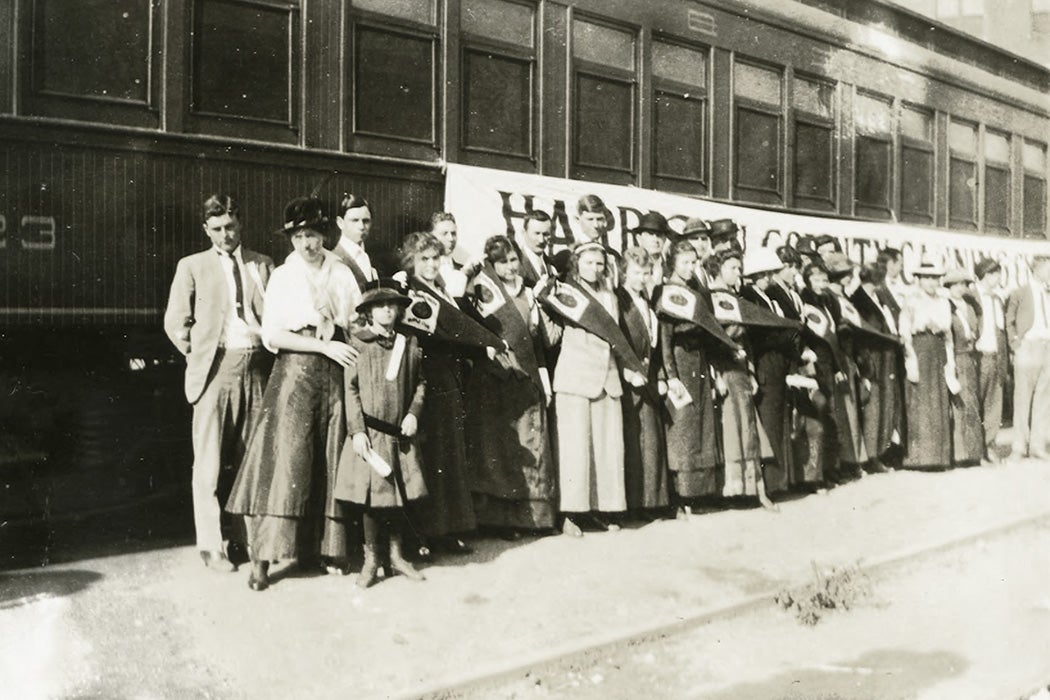“What are we doing for the farm girls?” Marie Samuella Cromer raised her hand to ask this question after a 1909 talk on the success of corn clubs for boys in the US South. The corn clubs, explains American Studies scholar Elizabeth Engelhardt, provided “training [to] local farmers to teach their peers and youth to teach their families in more efficient methods for rural life.” The clubs would also help the overall corn production of a region. In a 1912 article in The Journal of Education, a Bureau of Agriculture official heralded the clubs as a necessity “if American agriculture and rural interests are to endure and contribute to human comfort and prosperity as they should.”
Cromer’s question pointed out that programs like these could never reach their full potential by focusing only on the boys. She wasn’t content to let that potential be wasted, and as Engelhardt writes, “By 1910, she had successfully organized a girls’ tomato club so that the girls would ‘not learn simply how to grow better and more perfect tomatoes, but how to grow better and more perfect women.’”
The clubs weren’t just about growing this profitable crop, but, as Engelhardt explains, they “helped put very real money in girls’ pockets, some of which went toward pretty dresses and fun but much of which they spent on education for future jobs.” One club member, for example, who wrote about her experience in a 1915 article in The Journal of Education, acknowledged that the work was “long and sometimes tiresome.” But she continued, “It has been a way by which I could not only have my own spending money and pay my expenses at the Farm Camp, but I also have a bank account of sixty dollars.”
A typical tomato club had members aged 12–18, who “planted 1/10-acre individual plots, worked in groups to can their harvests, and then marketed their wares locally and nationally,” according to Engelhardt. Canning was a focal point of club activities, as canned goods were increasing in popularity in the nation in the early 1900s. Some clubs even employed mechanical canners, creating production lines so effective that they threatened commercial canneries. “This was not the safe domesticity of kitchen work,” Engelhardt explains. “It held the possibility of expanded career horizons and self-confidence.”
The clubs were part of a concerted effort to reform the nation’s agricultural practices, explains information scientist Ciaran B. Trace, though this effort was mainly targeted to “white men and, to a lesser extent, white women.”
Weekly Newsletter
Tomato clubs, on the other hand, were an important part of “early interracial cooperation,” notes Engelhardt. Though Black communities had established their own clubs and methods for teaching these skills, “white and black [club leaders] shared information, worked closely together, and taught each other lessons that they would then pass on to their constituencies.” This type of cooperation could also be dangerous, Engelhardt notes, because some in North Carolina, for example, “viewed tomatoes as instruments in early civil rights work.”
The clubs began to fade away after World War I, as mechanization changed some of the agricultural processes and a return to more “traditional” politics quieted the “earliest club messages of empowerment and social change,” reports Engelhardt. But for the short time the clubs lasted, Southern girls and women were able to “slip the heady taste of freedom, modern life, and social change into seemingly innocuous, ever-present cans and jars of home-grown tomatoes.”







